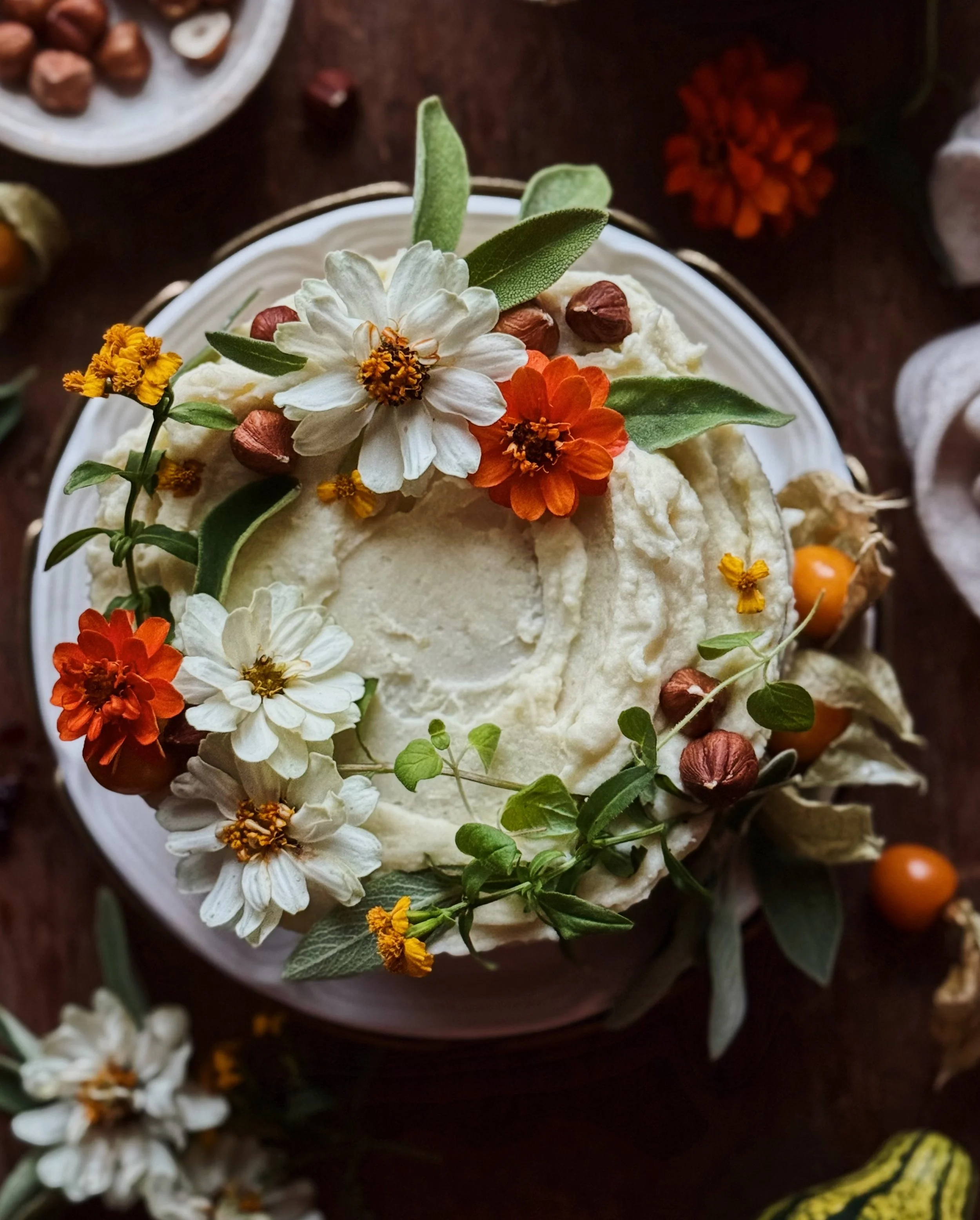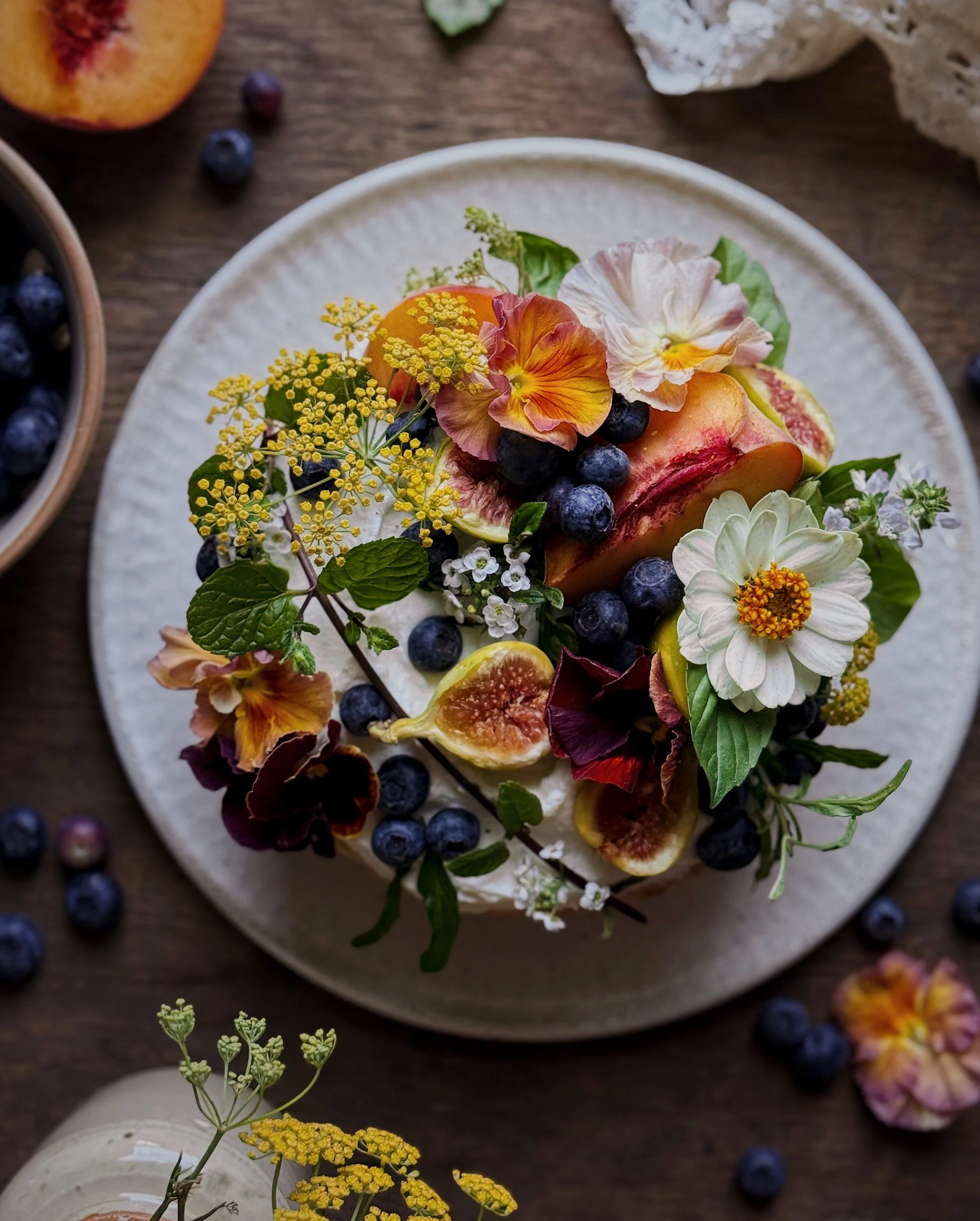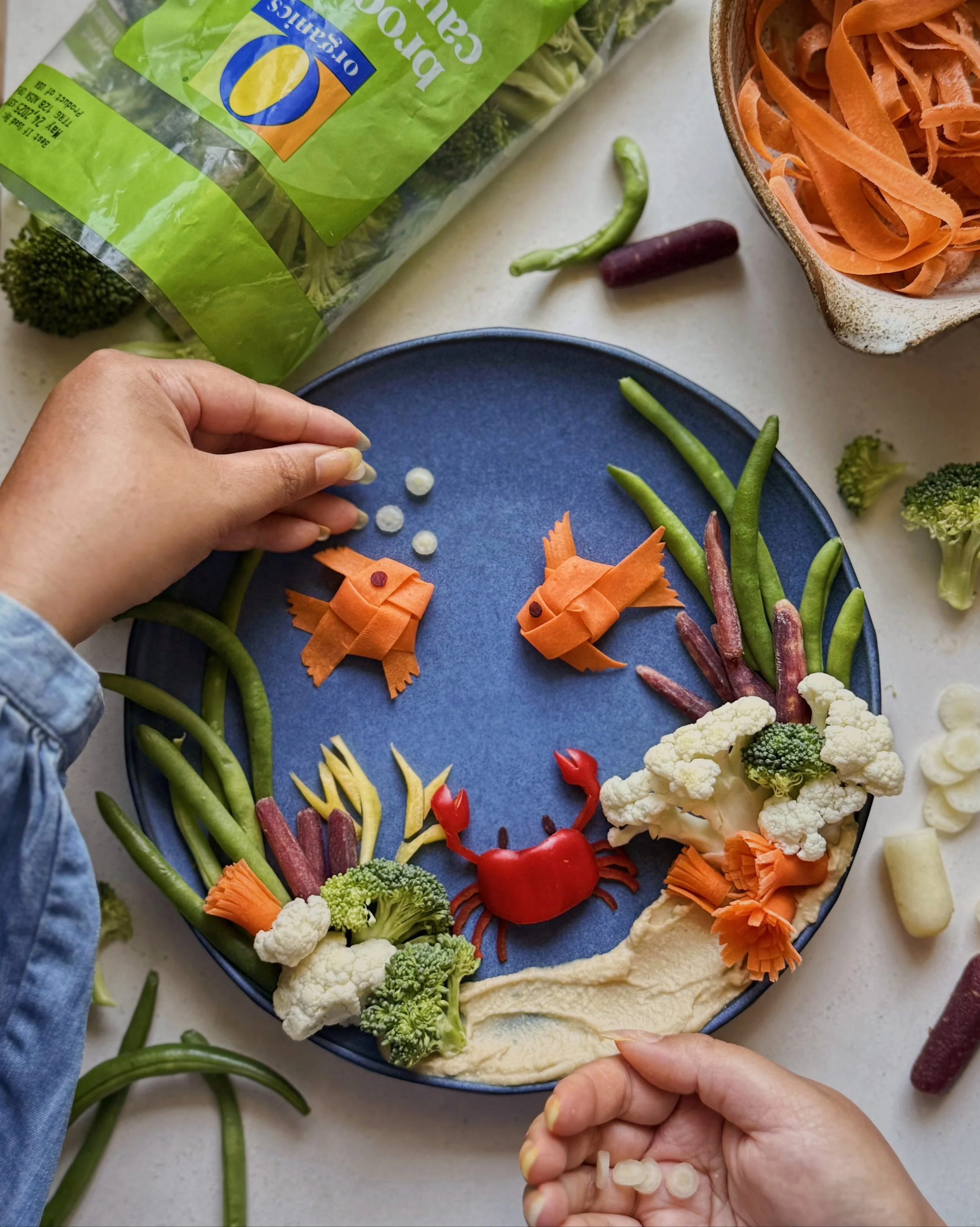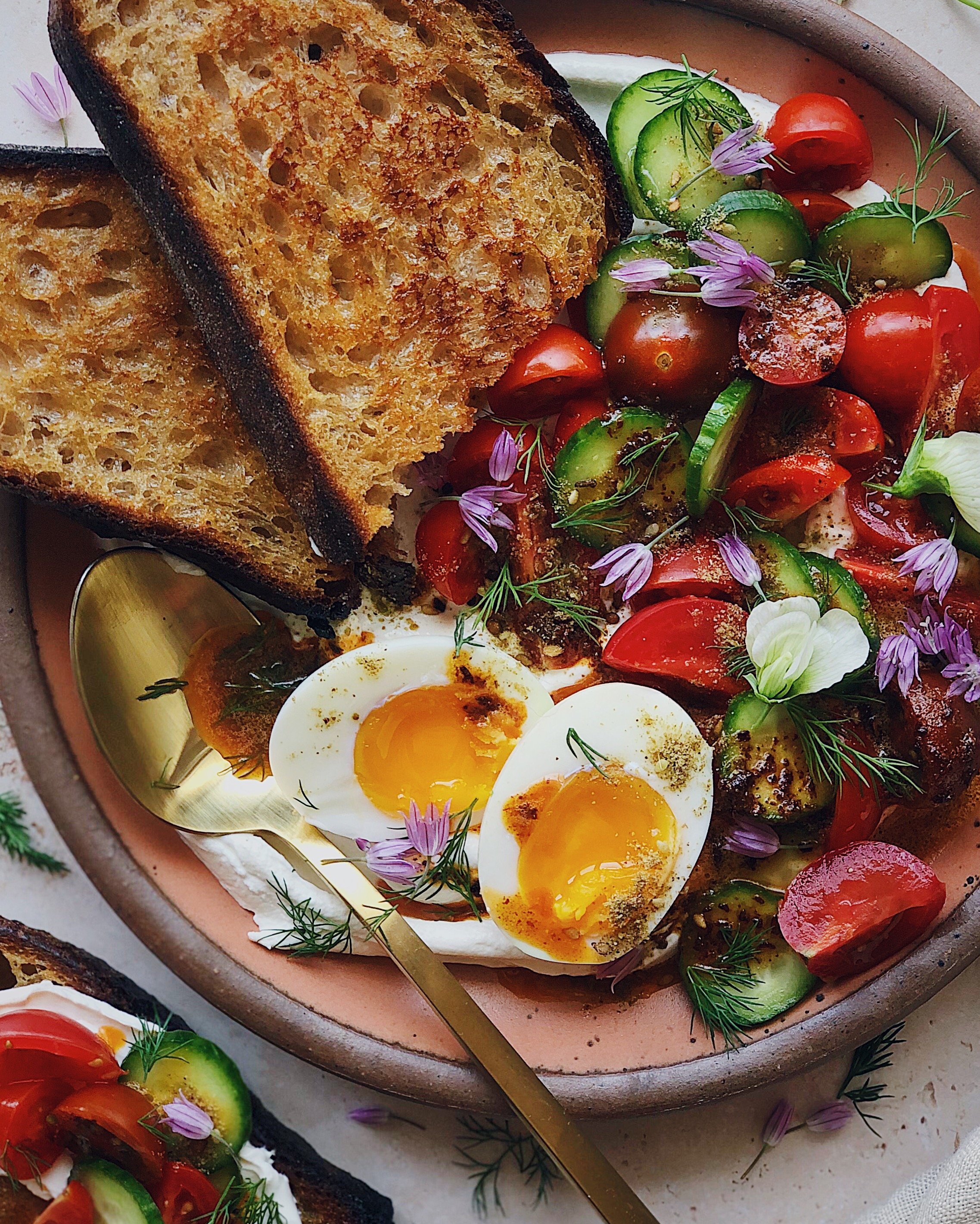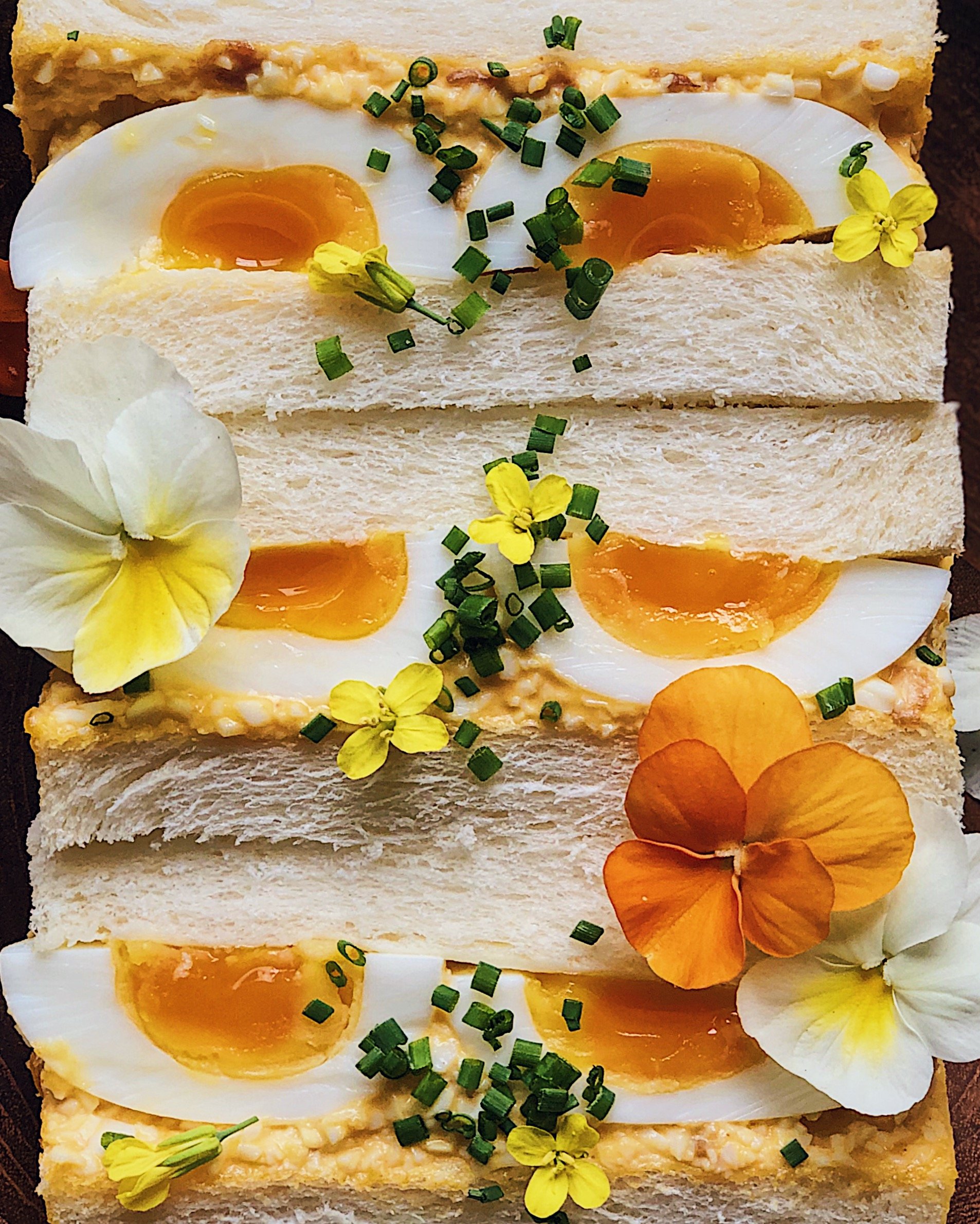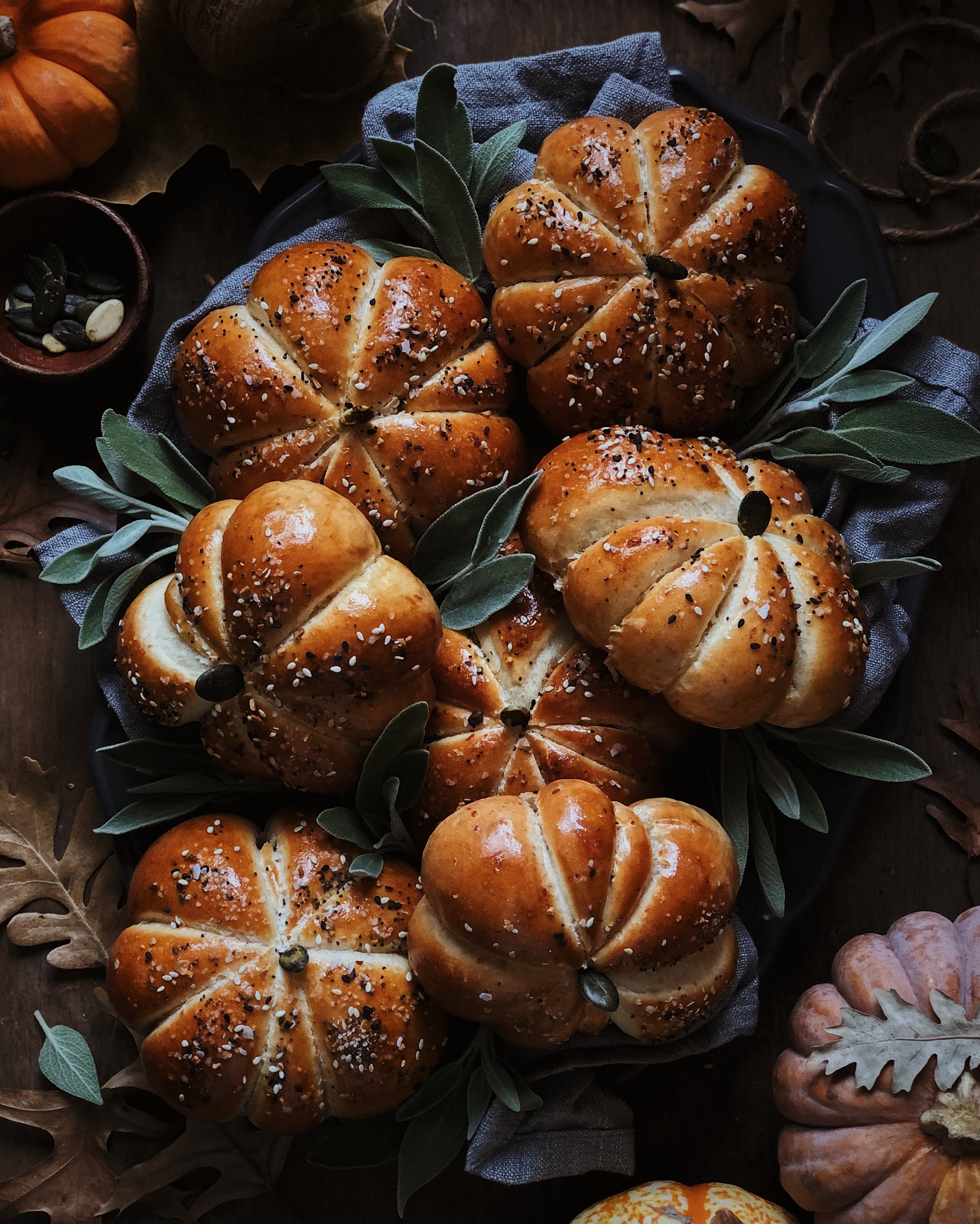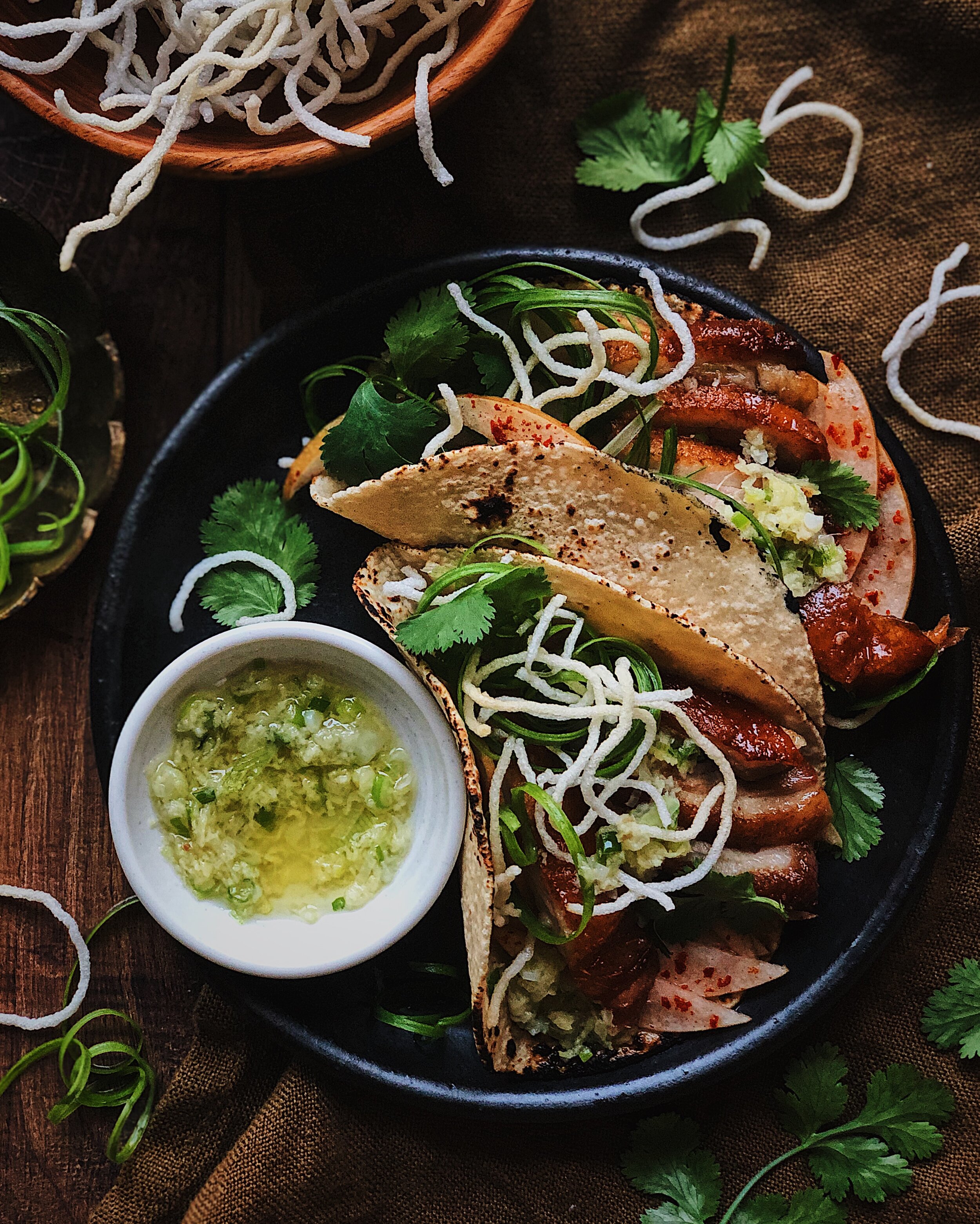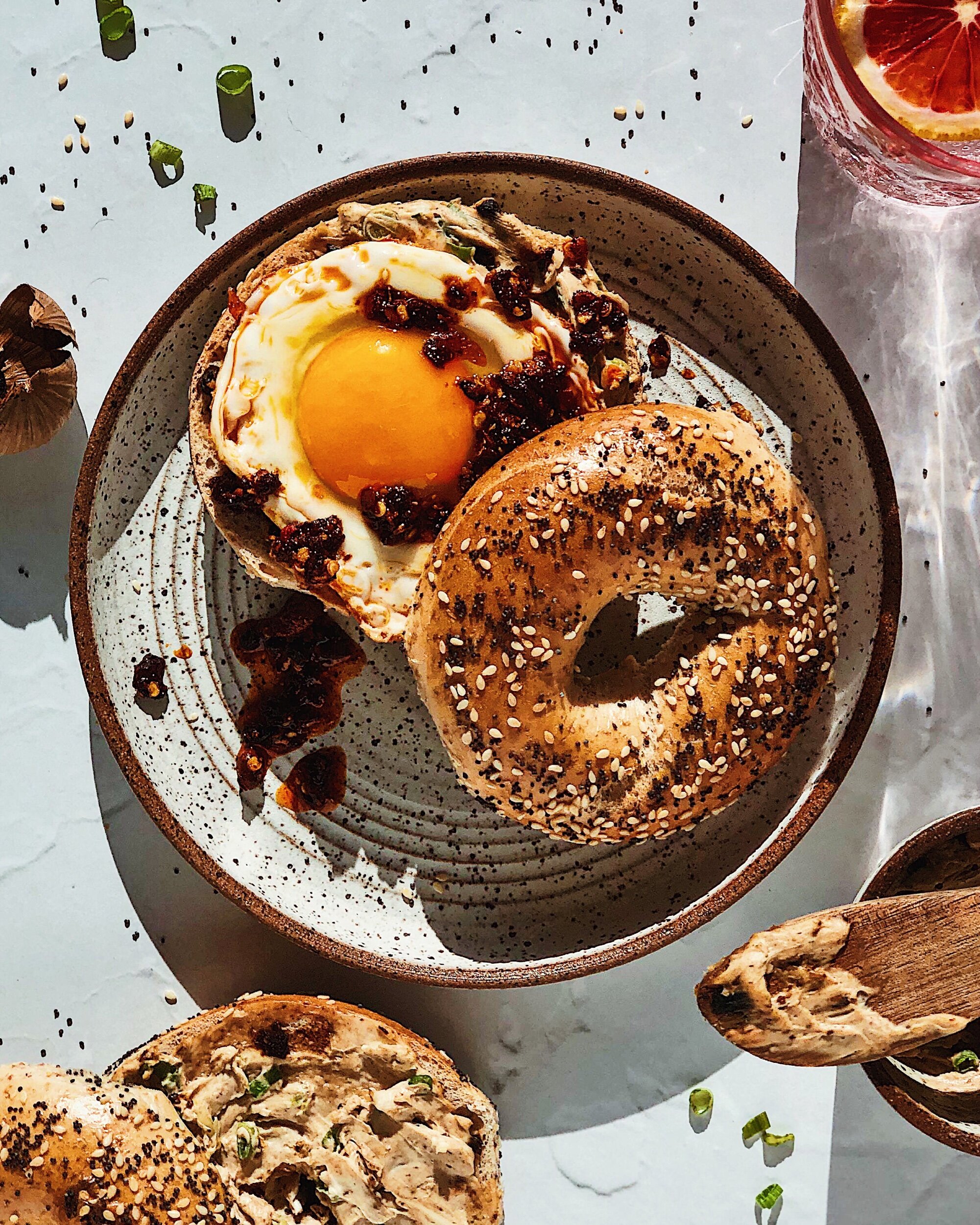10 Ways to Make an Edible Flower Bouquet (Without a Garden)
/I love flowers just as much as the next girlie girl but what I love to receive more than anything is the gift of good food. And if your Valentine this year is like me, you might want to consider skipping that generic bouquet of roses for something homemade and edible instead!
One of the most frequent questions I get about making pretty food is asking where I buy the flowers I incorporate into my food styling. The answer is that most of them come right from my own backyard—growing your own edible flowers is the best way ensure the freshest and safest blooms that you can eat. I totally understand, though, that not everyone has their own outdoor space to grow in, which is why I also love creating flowers that are made directly out of actual food. The truth about edible flowers like pansies, violas, and zinnias is that while they make your food look beautiful, they don’t actually add that much, taste-wise. That’s why making your own flowers out of food is an even better option!
You won’t need a garden or access to a farmer’s market to make these pretty and impressive edible bouquets below! Whether you are looking to make a thoughtful dish to wow someone on Valentine’s Day or just wanting to treat yourself or your dinner guests with something special for the eyes as well as the palate, here are 10 ideas for how to make your own edible flower bouquet.
Sashimi Rose Rice Bowls
I love making these with salmon sashimi but you could use any kind of sashimi you wish. Use the thinnest piece and roll it into a tight spiral for the center, then continue to wrap pieces of sashimi around until you have formed your desired size for your “rose”. Serve these over a bowl of sushi rice, which will help to hold the rose formation in place. I usually like to style these with leaves cut from cucumbers. Here is where I learned how to do the cucumber leaves. You could also roll Japanese pickled ginger into roses and serve that as part of your edible sushi bouquet as well.
Charcuterie Board Pizza with Charcuterie Roses
My Valentine’s Day tradition with Spouse is to have a chill pizza night at home. You could make your at-home pizza date even more epic and romantic by turning your pizza into an edible bouquet! For this pizza, I was inspired by my love for charcuterie boards and I other than the melty cheese, I actually added most of the ingredients on top of the pizza after it was baked. Rolling slices of charcuterie like salami and pepperoni into roses is an easy way to make one of the most delicious edible bouquets.
I developed the recipe for this Charcuterie Board Pizza for 3 Little Pigs. You can find the full recipe here on their website.
Radish Violas on Toast
Dress up a simple toast with your favorite spread by adding these cute violas made out of purple daikon. Or make a whole bunch of crostini to snack on while having a romantic movie night at home.
Here are step-by-step photos that show how I made these. I used mini toasts for the base and pâté for the spread in the tutorial but you could use whatever spread as you want. You just need something that will hold the cut radish pieces in place.

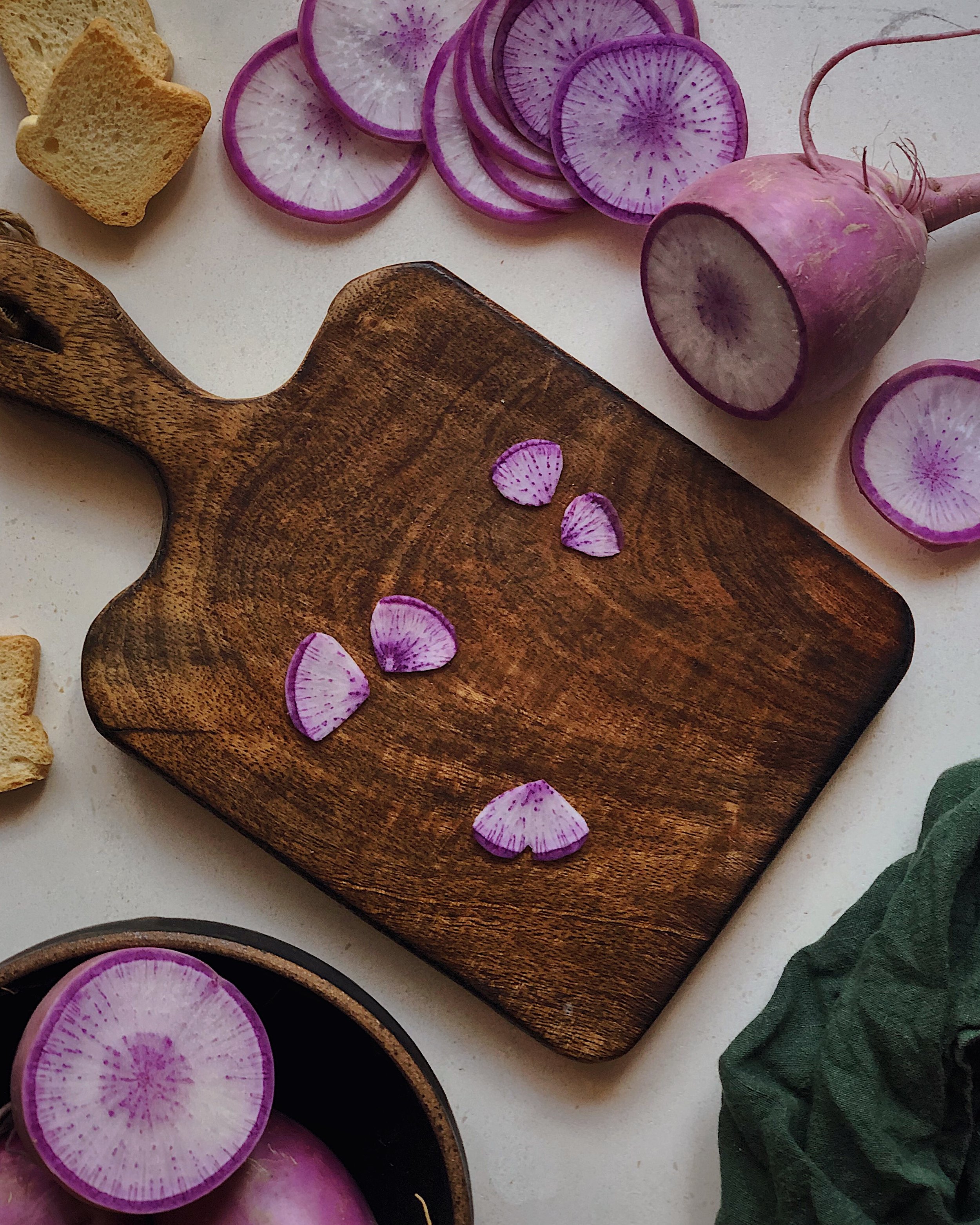
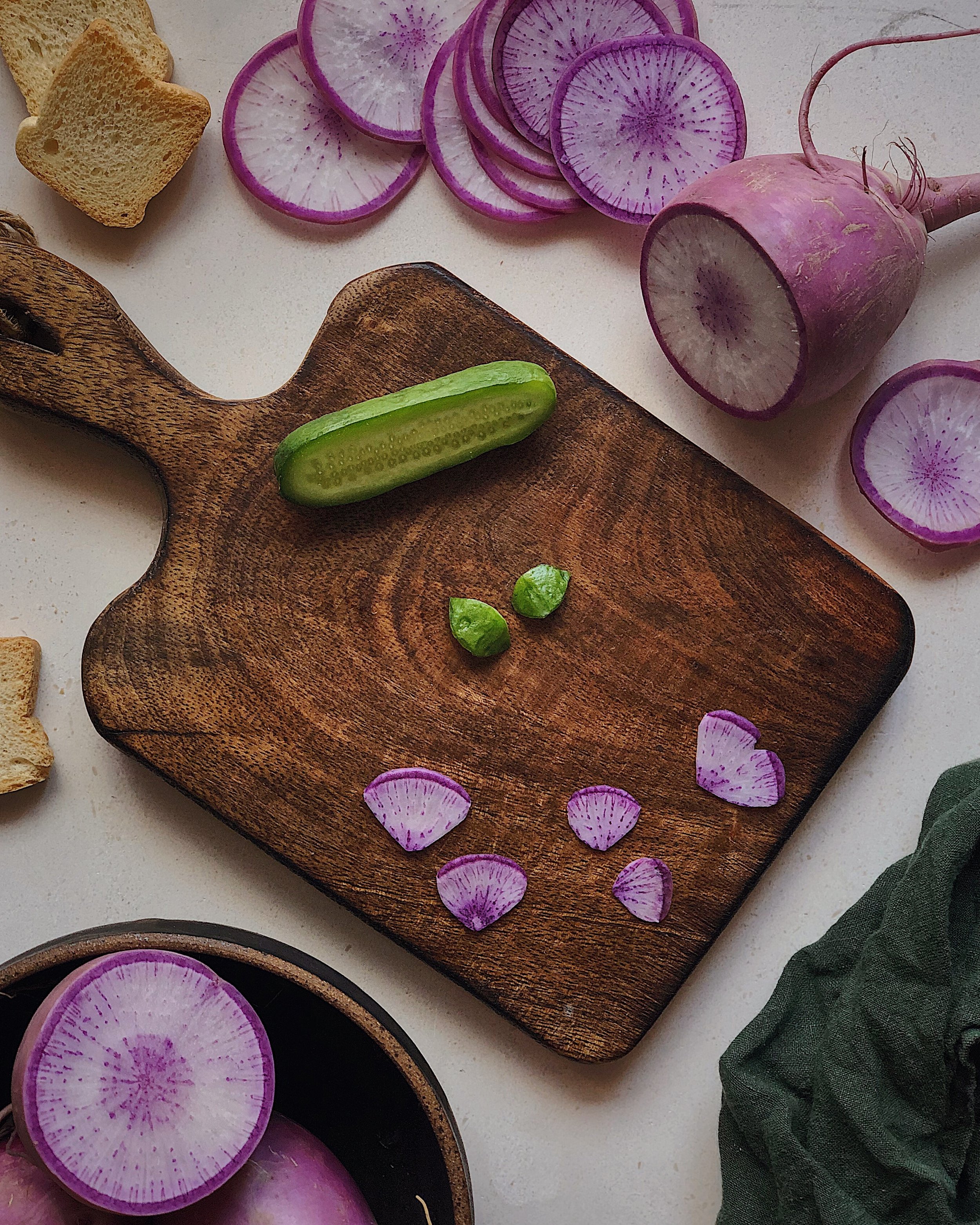
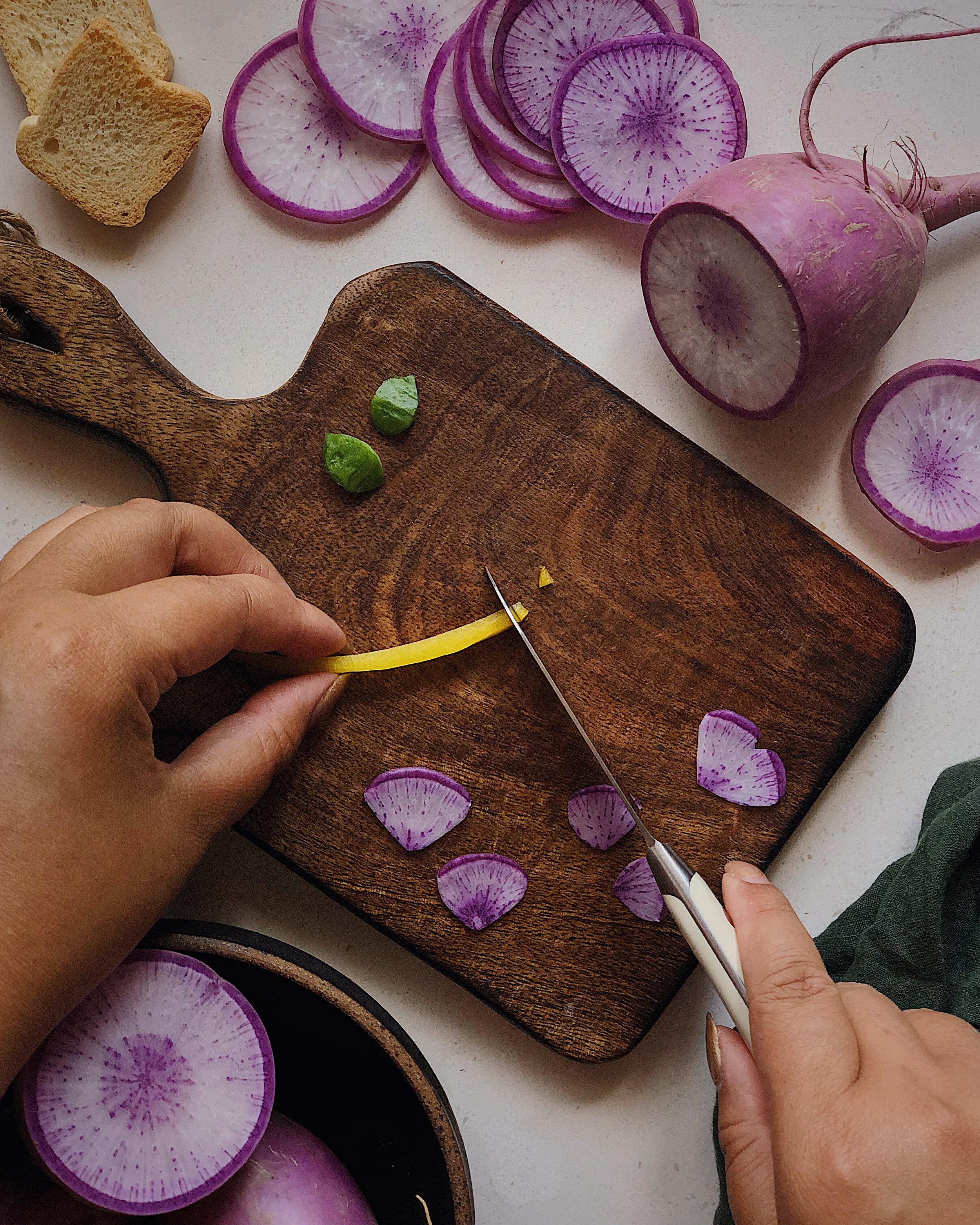
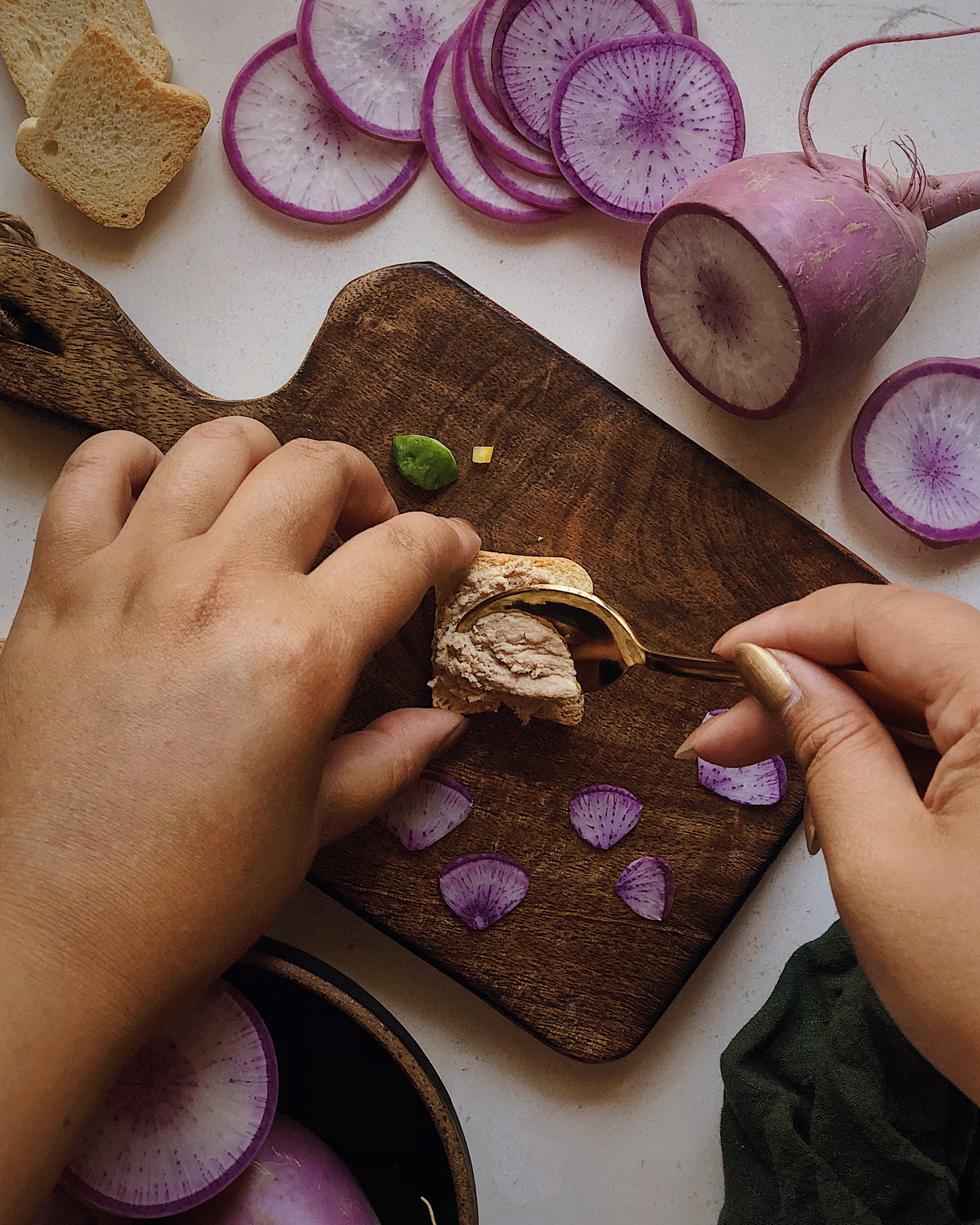
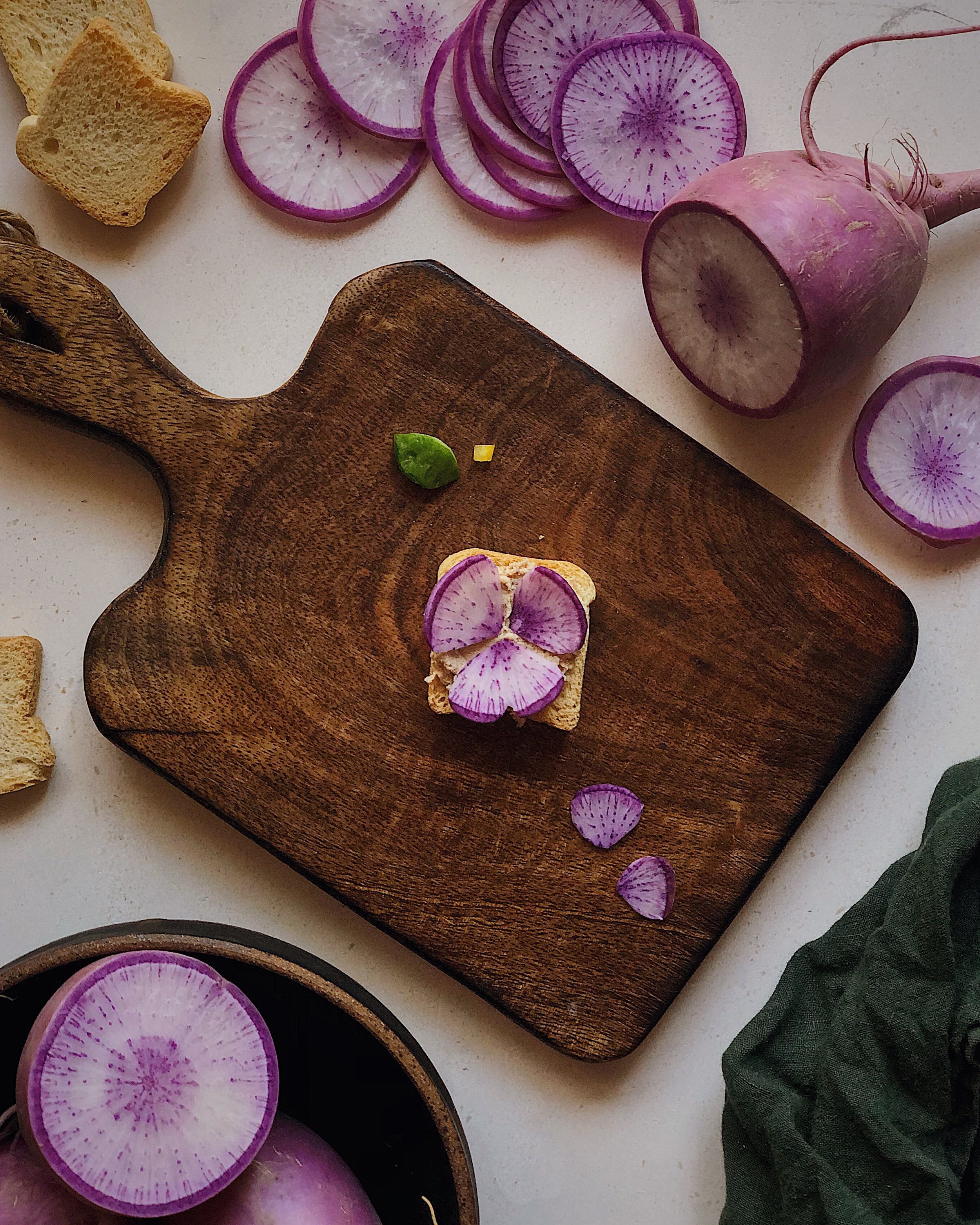
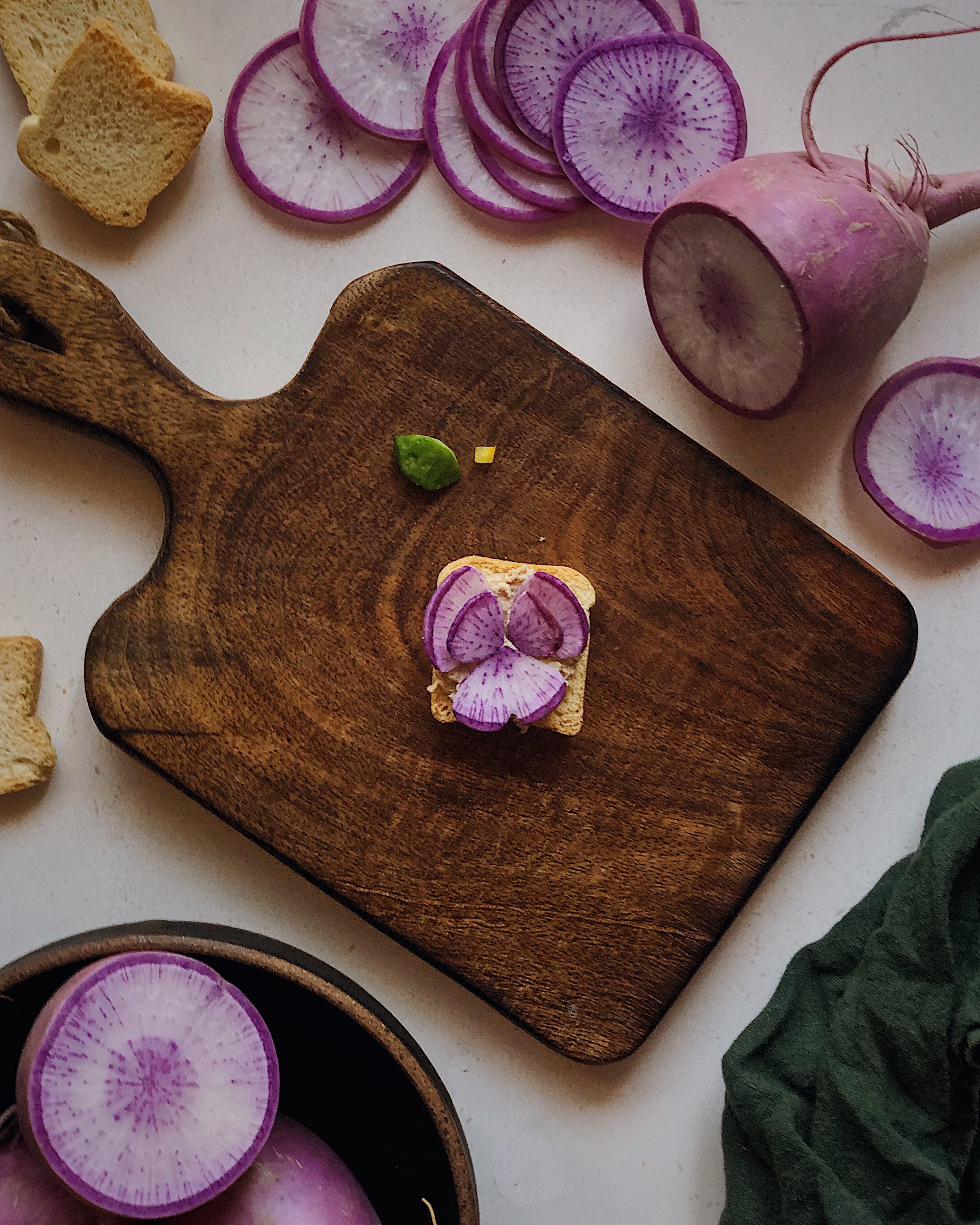
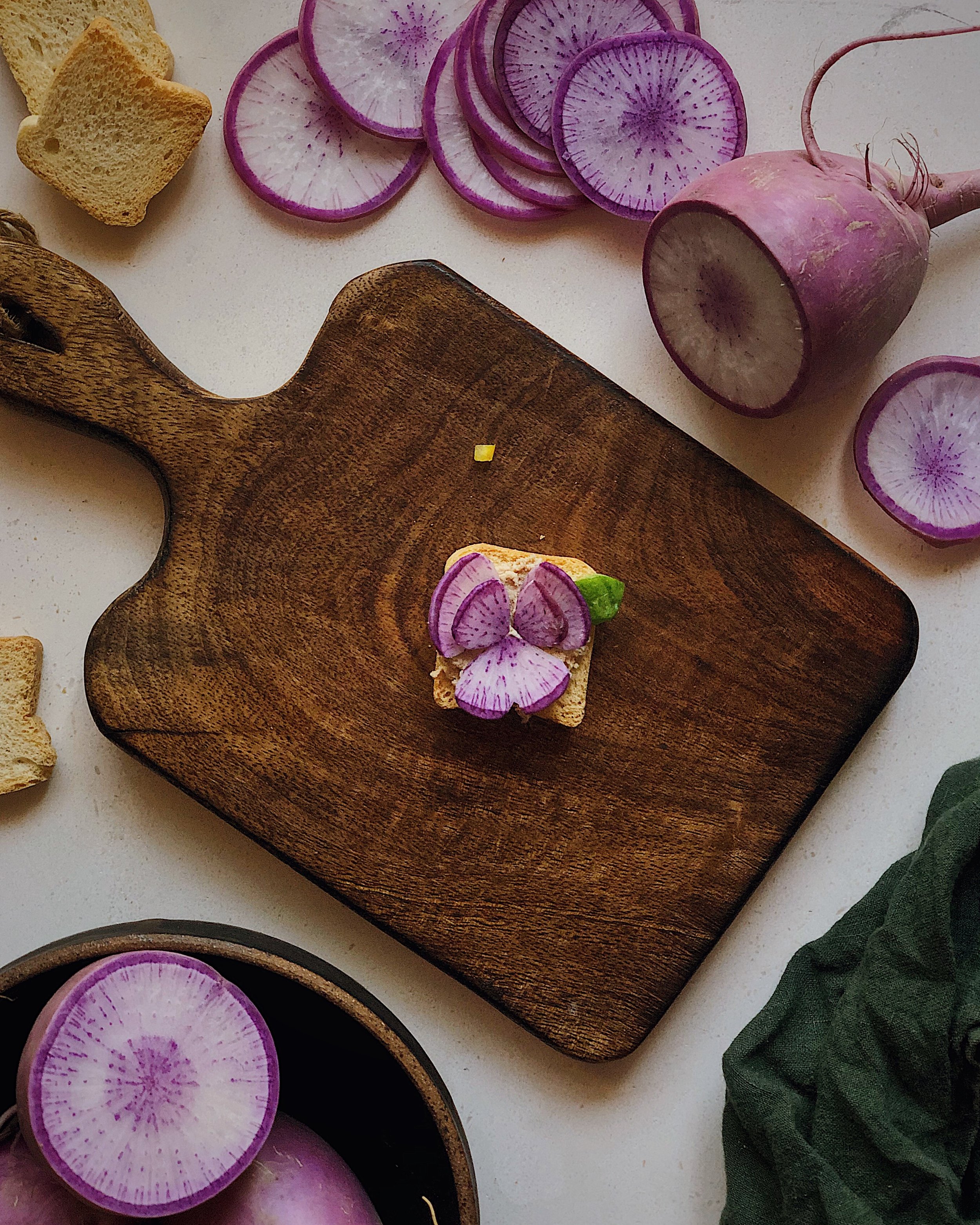
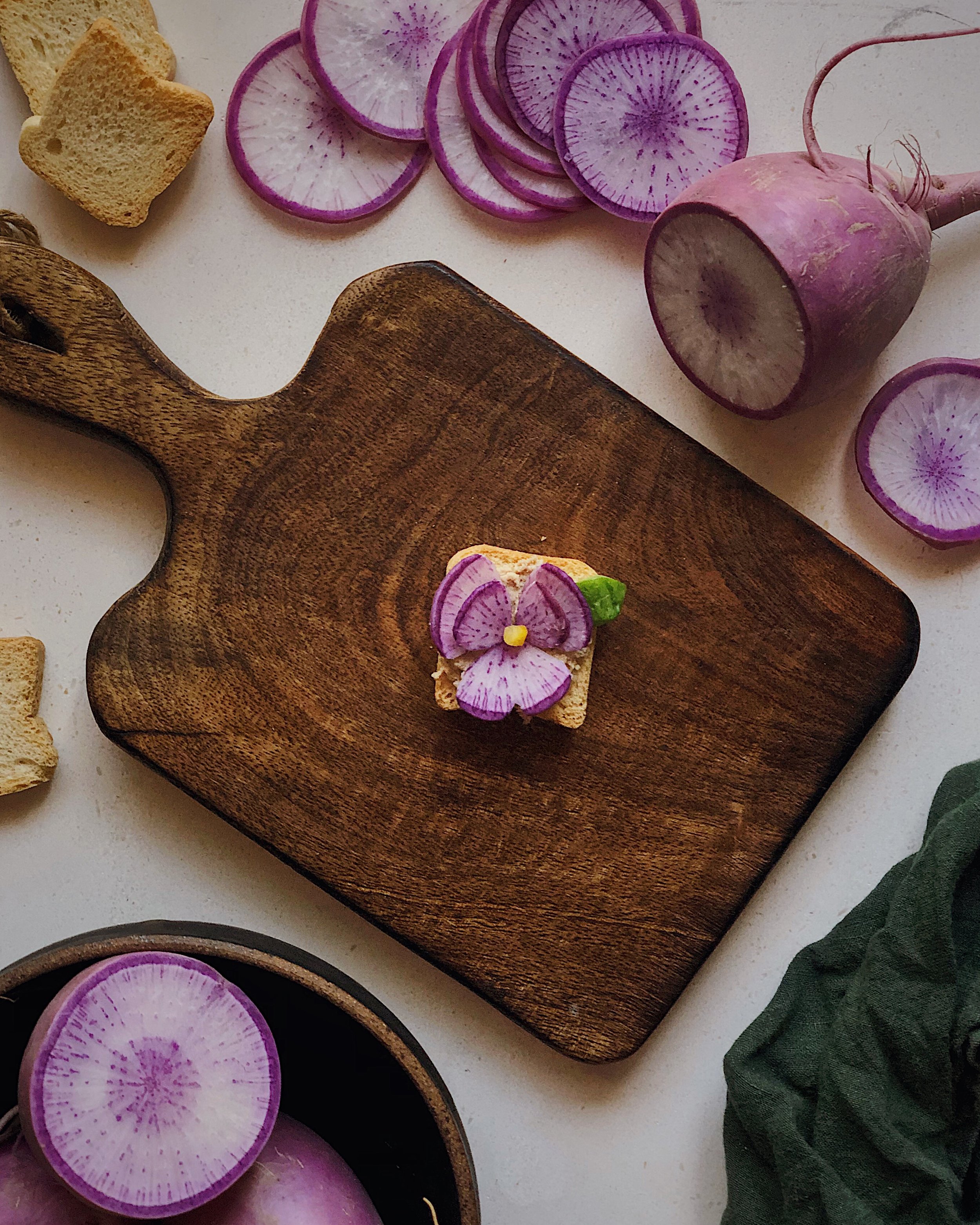
For an alternative color option, soak the purple daikon slices in something acidic like lemon juice and they will turn hot pink! You could also use white daikon and soak them in some beet juice to make pink flowers if you can’t find purple daikon.
Sweet Potato Roses on Cheddar-Stuffed Focaccia
Unlike actual flowers, baking can often improve the appearance of flowers that are made out of veggies, curling their “petals’ and making them look more natural. I think that is very true when making roses out of sweet potato and baking them into the surface of an easy from-scratch focaccia. You can find the full recipe for this mushroom, sweet potato, and cheddar stuffed focaccia here on my blog.
Tomato Rose Caprese
I love making these tomato roses in the summertime when I can get all sorts of fun varieties of cherry tomatoes from the farmers market. But you can still make them with regular ol’ store-bought cherry or grape tomatoes; I actually find that it is easier to work with tomatoes when they are firmer, and adding a little sprinkle of salt at the end can really help improve the flavor.
Here are photos that show how I made these.
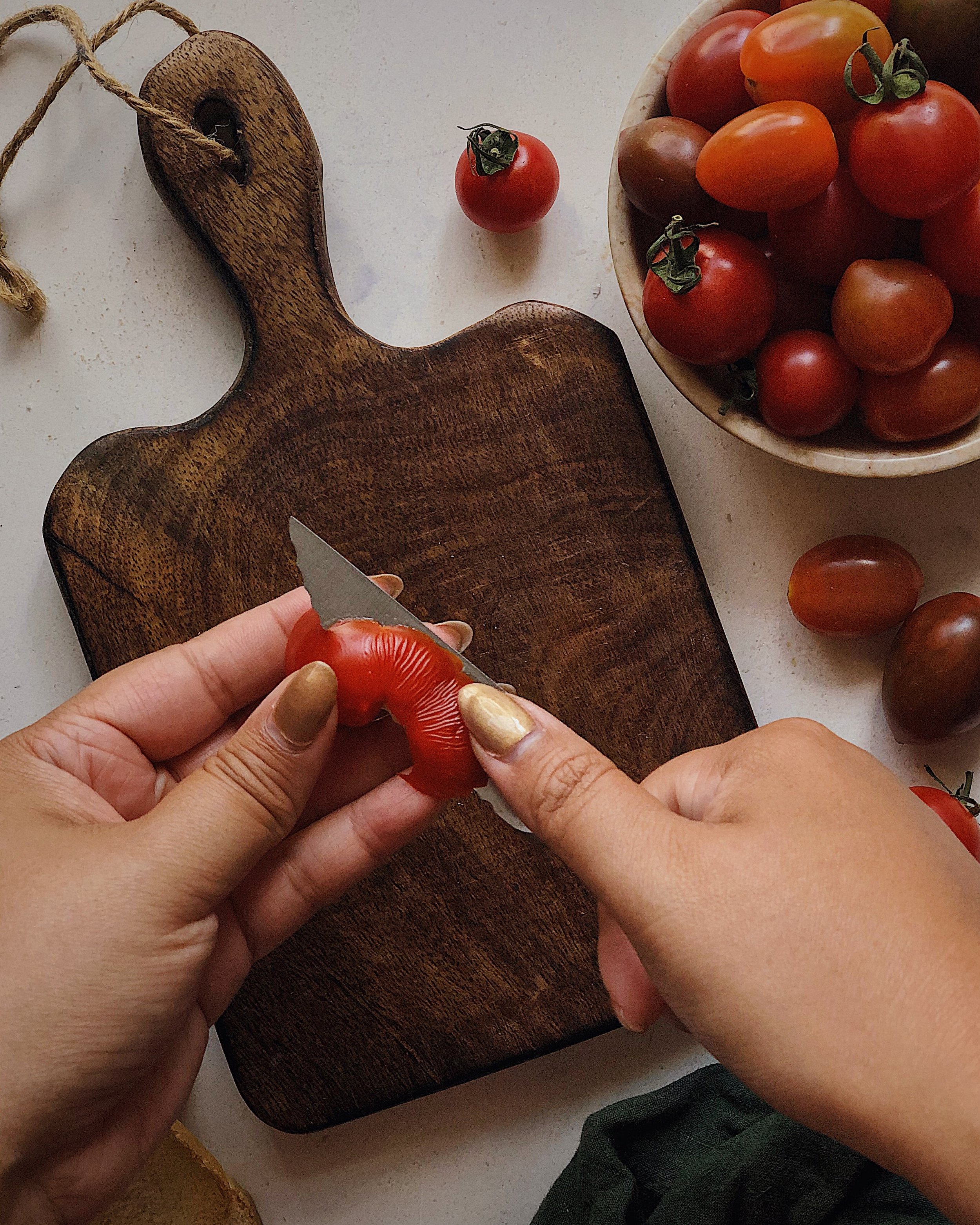
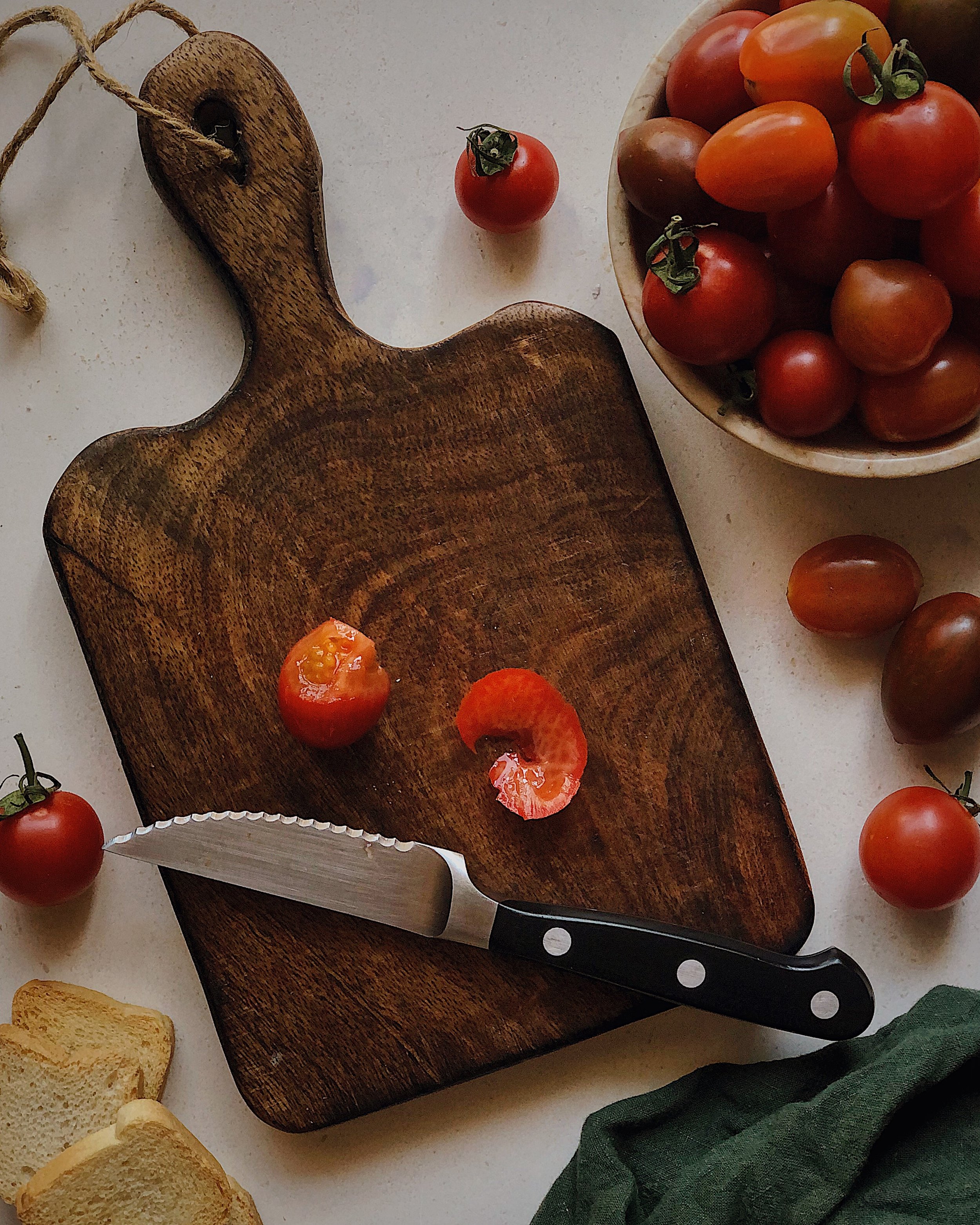
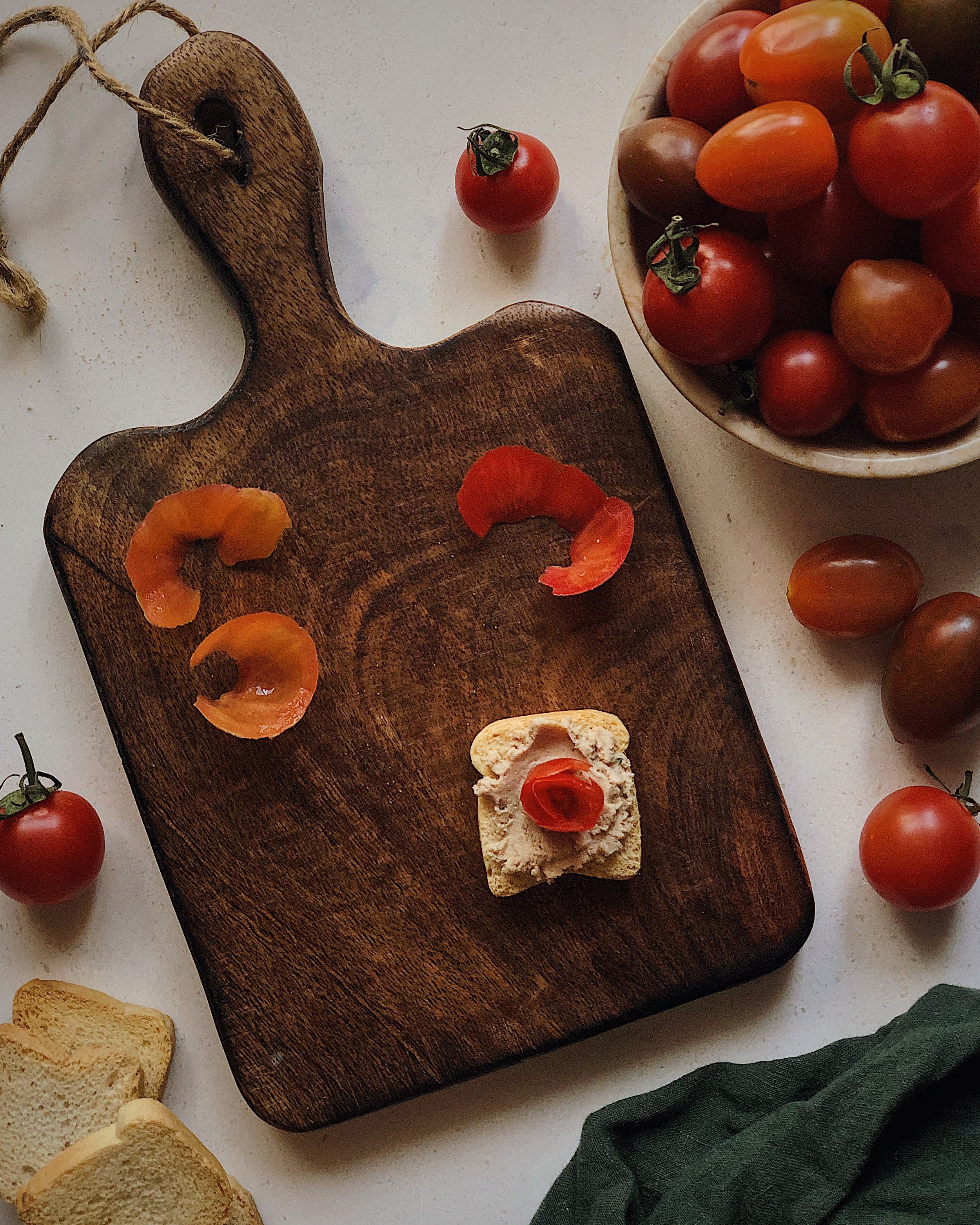
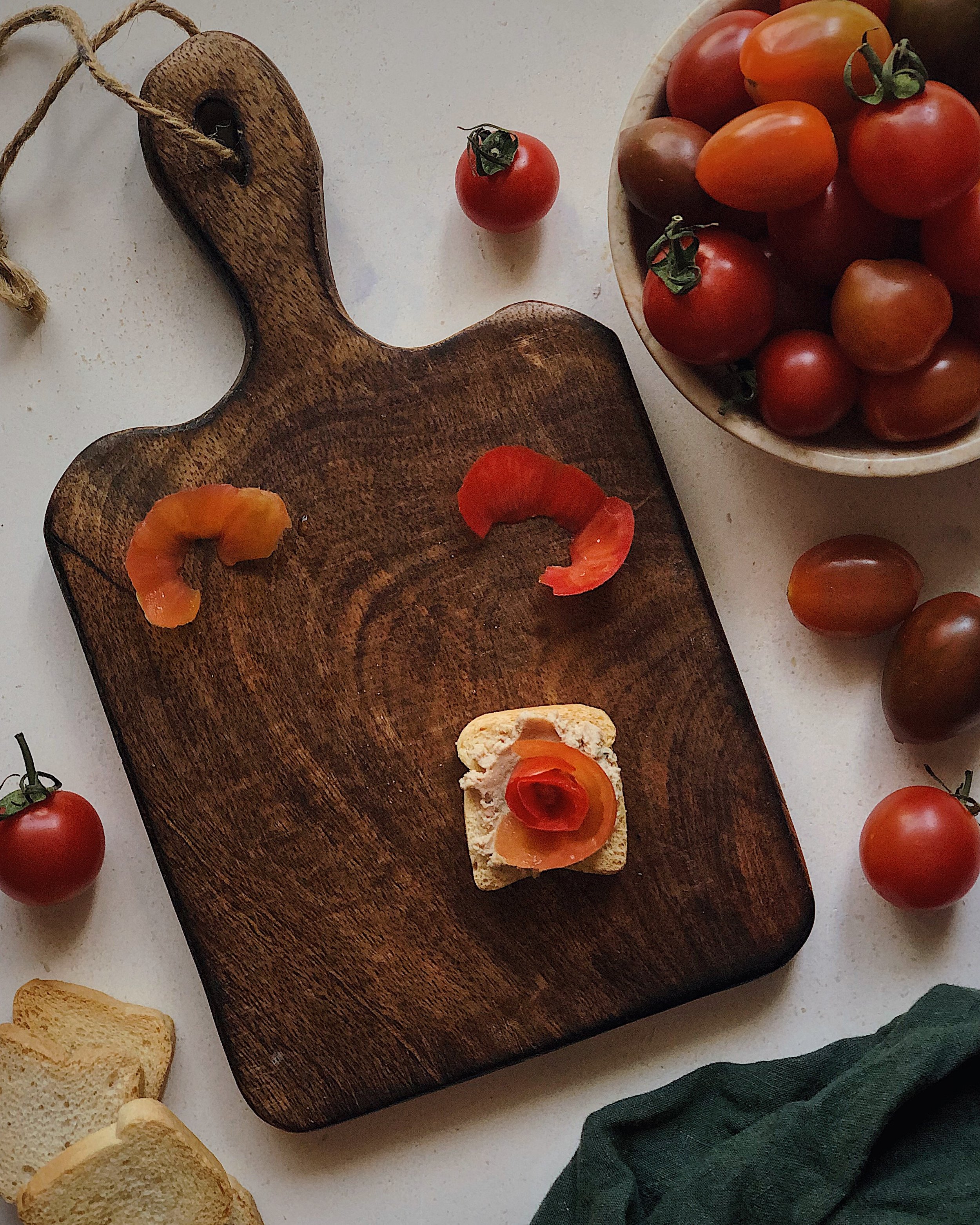
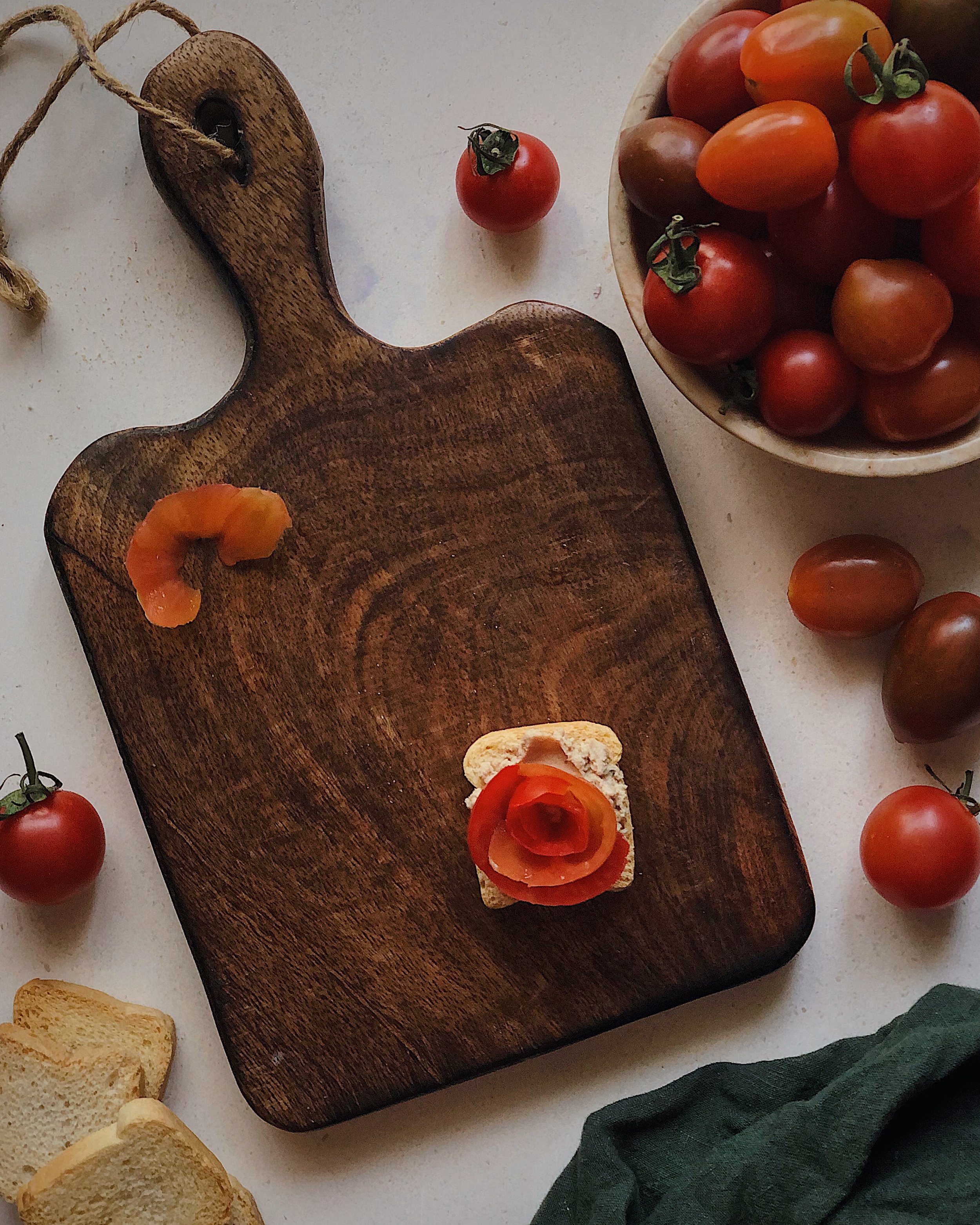
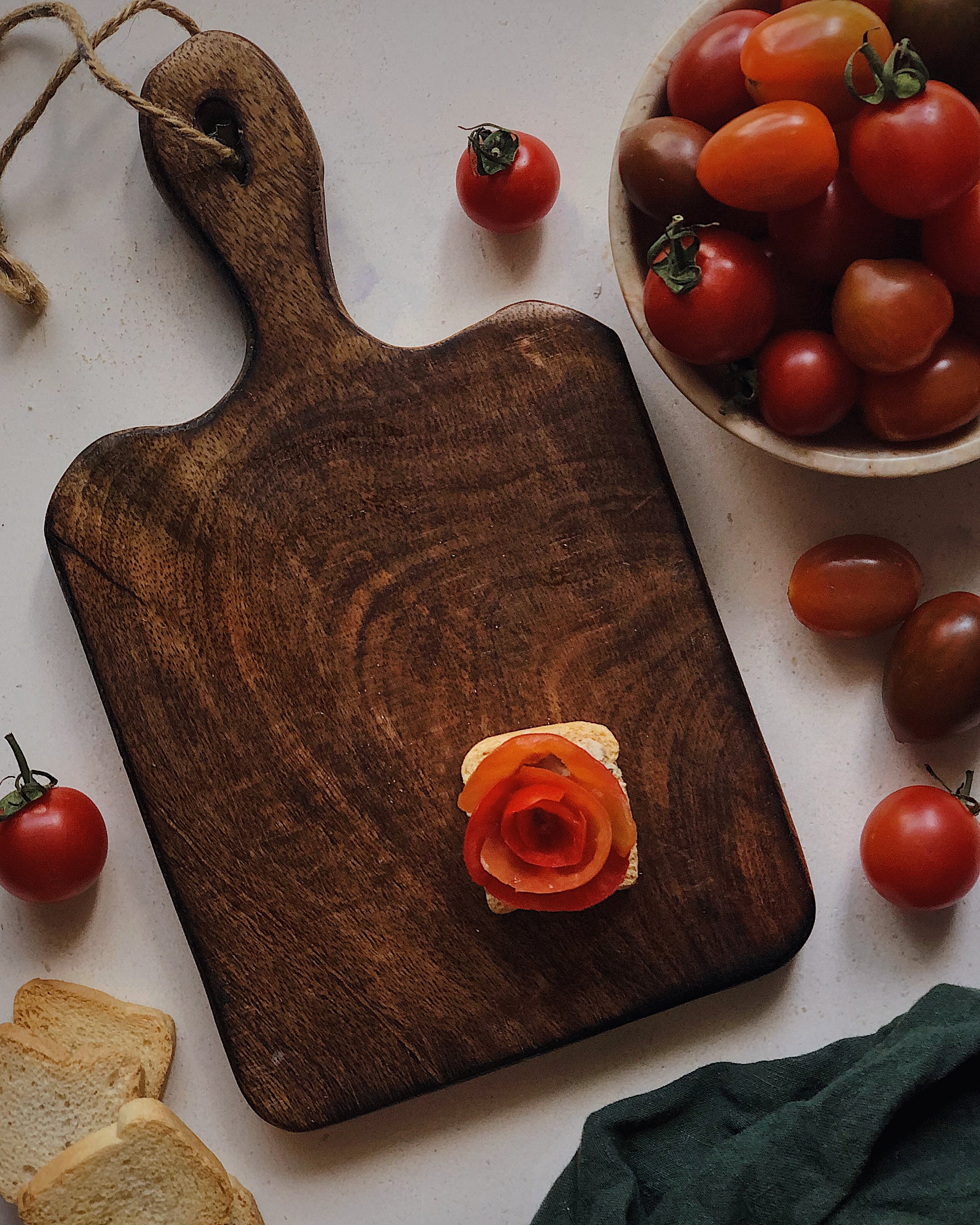
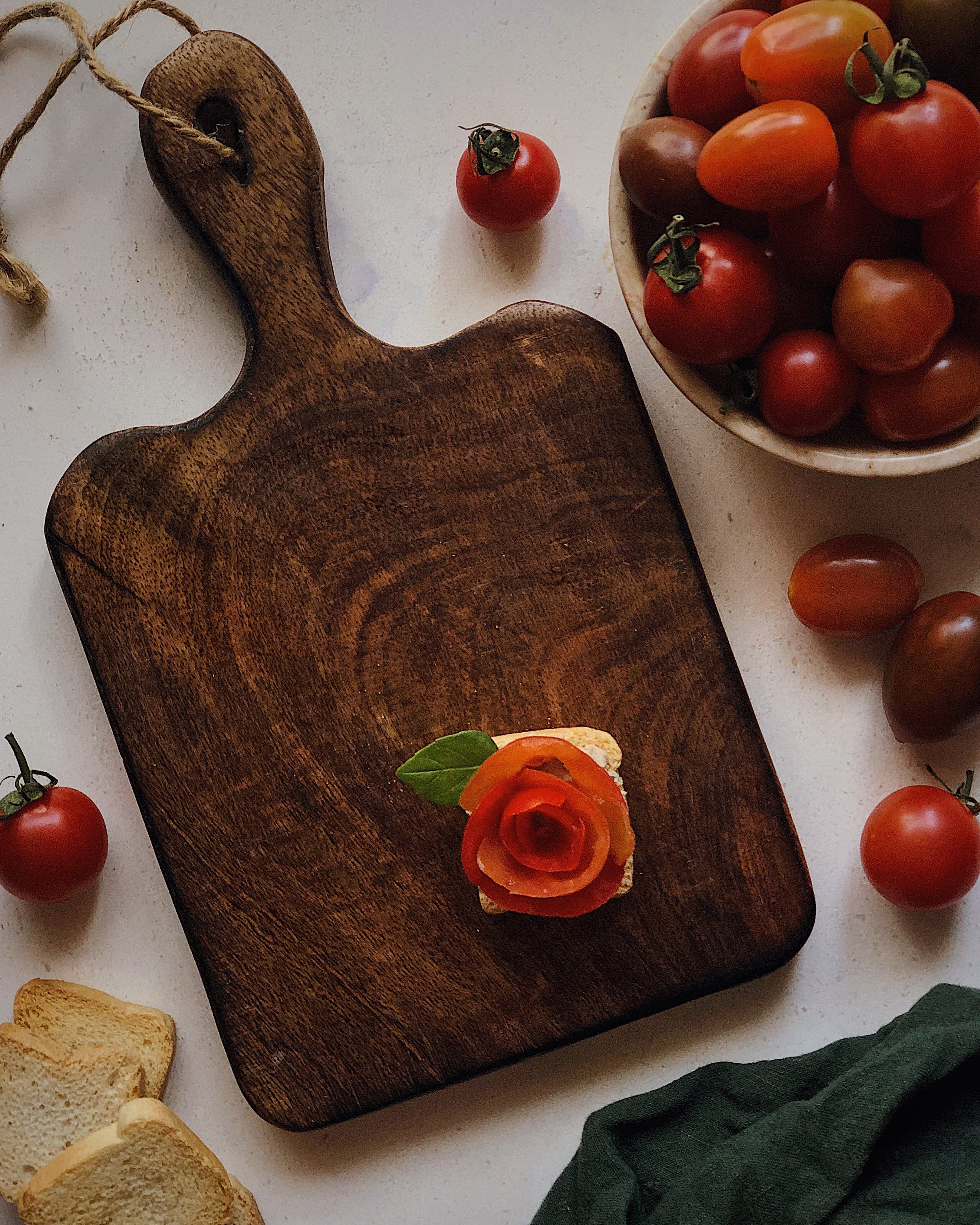
Use these beautiful raw tomato roses to make caprese, serving them with mozzarella (or burrata) and basil or a drizzle of pesto. Or, make an easy caprese-inspired tart by baking up a store-bought puff pastry for the crust, topping with something mild and creamy for a spread, and filling your canvas with these tomato roses before finishing off with some fresh herbs.
Labneh Painted Toast
I always say that toast makes a wonderful edible canvas. And I have found that thick, creamy labneh works great as an edible paint when it is combined with any number of natural powers to make different colors. You can make your own powders by blending dried herbs and freeze-dried fruits in a spice blender until very fine, and then mix that in with the labneh to get your desired shade. Here are some colors I have successfully made:
red: chili powder, paprika
orange: paprika + curry powder
yellow: ground turmeric, curry powder
green: matcha, moringa powder, spirulina powder
blue: butterfly pea flower
purple: elderberry powder, beet powder + butterfly pea
pink: beet powder
peach: hibiscus powder
I like to use a mini offset spatula to spread my edible “paints” onto my toast. And I sometimes use bee pollen or sesame seeds as finishing touches.
Savory Custard Tart with Veggie Flowers
This savory cheesy tart is more custardy than a quiche or frittata, but any of these eggy tart options are a great vessel for holding together a veggie bouquet. Simply make your egg mixture as you normally would, arrange your vegetable pieces, and then bake according to your recipe. I made these roses out of orange bell peppers; I used a sharp knife to cut off the exterior, keeping it intact as one long strip. Then I rolled the strip into a spiral to form a rose. I cut leaves out of zucchini using the same method that I used for the cucumber in the sashimi bowls above.
Root Vegetable Rose Bouquet Tart
Pretty much any veggie ingredient that can be thinly-sliced and made soft can be turned into edible roses. I love making them with beets and fall squash because of the beautiful rich color that the beets bring to the edible bouquet.
My general formula that I have used for the many bouquet tarts I’ve made like this is to make a flavorful short crust and bake it all the way in the tart pan. Then, fill it with a cheesy spreadable filling that does not require baking. Then fill it up with a whole bunch of edible roses! For this specific version that I made a couple of autumns ago, you can find the full recipe here on my blog.
Pickled Pattypan Squash Toast
The cross-section of pattypan squash already looks like the shape of a flower to me so that’s how this idea came to be. Slicing the squash thin with a mandolin and then quick-pickling them allows the slices to become softer and more pliable for shaping them into flowers!
Bell Pepper Poppy Focaccia
I think I have saved the easiest idea for last! Inspired by the beautiful California poppies that grow in my neighborhood, I made this focaccia bouquet design using orange bell peppers to resemble poppies. I just cut the bottoms off of the bell peppers and did a tiny bit of shaping to define the petal shapes a little better. Any tender green stems and herbs would work great for leaves, including even the carrot fronds that I used here.
I hope this list will inspired to make your own edible bouquets at home! If you try one of these ideas and share it on Instagram, please tag me so I can admire how it turned out!
